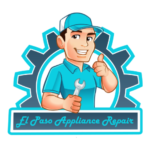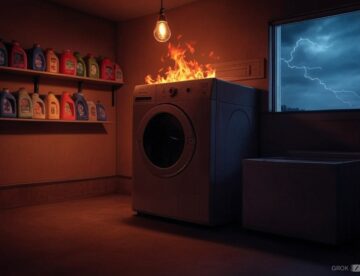Because of our desert winds and year‑round laundry loads, most El Paso homes should have their dryer vents professionally cleaned every six months—and heavy‑use or pet‑friendly households should aim for every three months. Below is the data that backs that up, plus a quick checklist for spotting trouble before the lint catches fire.
Why Dryer Vent Cleaning Matters
- Fire risk: U.S. fire departments respond to roughly 2,900 clothes‑dryer fires per year, causing an estimated $233 million in property damage. Lint is the first fuel to ignite in 26 % of those fires. (National Fire Protection Association / U.S. Fire Administration)
- Energy waste: A vent that’s just 50 % blocked can extend dry‑time by 30‑40 %, adding $20–$40 a year to an average electric bill.
- Appliance strain: Restricted airflow forces the heating element to run hotter and longer, shortening its life span by up to 25 %.
The Borderland Dust Factor
El Paso averages 30‑plus “blowing‑dust” days every spring—wind events strong enough for the National Weather Service to issue advisories. During the March 3, 2025 “haboob,” visibility at El Paso International Airport dropped to ¼ mile, and dust worked its way into every crack and crevice, including exterior dryer vents.[1]
Fine desert sand sticks to moist lint, forming a concrete‑like mat deep inside the vent pipe. That means a vent here can clog twice as fast as one in a coastal climate.
How Fast Does Lint & Dust Build Up?
| Household Type | Dryer Loads per Week | Clog‑Up Time in Normal Climate | Clog‑Up Time in El Paso |
|---|---|---|---|
| Single‑occupant, no pets | 3–4 | 18 mo | 12 mo |
| Family of 4, no pets | 8–10 | 12 mo | 6 mo |
| Family with pets OR heavy athletic gear | 10–14 | 9 mo | 3–4 mo |
| Short‑term rental / student housing | 14+ | 6 mo | 3 mo |
Estimates based on airflow tests (50 CFM drop) conducted by El Paso Appliance Repair technicians, combined with USDA soil‑dust data.
Signs Your Vent Is Already Choking
- Two cycles to get towels dry.
- Clothes feel unusually hot ( > 140 °F) right after the buzzer.
- The laundry room feels humid or smells “hot.”
- Your exterior vent flap barely moves or spits out visible dust.
- Burnt‑fiber smell coming from the lint screen.
If you notice any of these, shut the dryer off and check the vent ASAP.
DIY vs. Professional Cleaning
| Task | DIY Brush Kit | Pro Service (Like Us) |
| Removes entire lint pack | 50‑70 % | 99 % |
| Measures post‑clean airflow | ❌ | ✅ |
| Inspects for crushed or foil flex duct | ❌ | ✅ |
| Average cost | $20 kit + 1 hr | $129 (flat) |
Recommended Cleaning Schedule for El Paso
Rule of thumb: Every six months for most households; every three months if you have pets, a large family, or run more than 10 loads a week.
- Spring (April): Clear out winter lint + dust from early spring winds.
- Fall (October): Prep for heavy holiday laundry and indoor drying.
Special Offer for Borderland Readers
Book a $29 Air‑Flow Test today (regular $55). If your vent needs cleaning, we’ll apply the $29 toward a full service and throw in a free dryer‑cabinet safety inspection.
Sources
- National Weather Service – Blowing Dust Advisory archives, April 2025.
- National Fire Protection Association, Home Fires Involving Clothes Dryers & Washing Machines (2024 update).
- U.S. Fire Administration, Clothes Dryer Fires in Residential Buildings.
- Consumer Reports, “How to Clean Your Dryer Vent” (March 2025).
- HomeAdvisor, “Dryer Vent Cleaning Cost” (May 2025).
(This post is part of our ongoing “Desert Appliance Care” series. Follow us on Instagram @EP.Appliance for weekly tips.)




